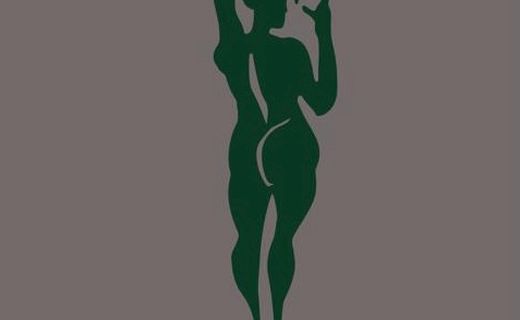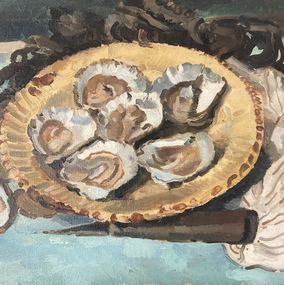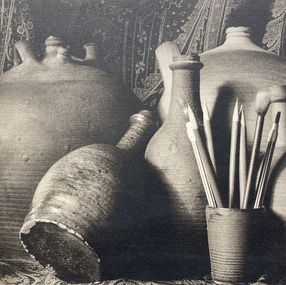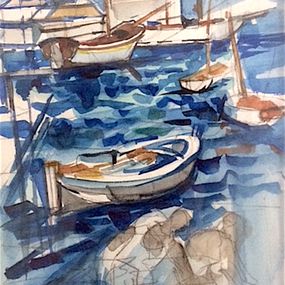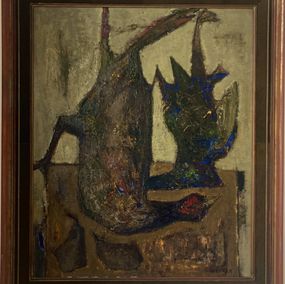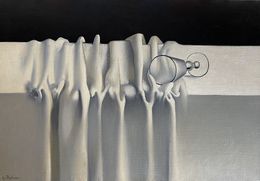
Nature-morte - France XXe
Paris From March 10, 2024 to April 29, 2024
Daring to deconstruct color, deconstruct the volumes of an object or choose to faithfully observe it, still means choosing from the world around us what seems most common. It is with the object that the Cubists and their followers reconnected with figuration. Representing became the watchword for several generations of painters until today when figurative art is experiencing an authentic revival. In 1934, an exhibition dedicated to the masters of reality recalled the importance of a painting of French tradition attached to the architecture of the present form, made of patient and contemplative observation, of an execution matured by the mastery of drawing , the power of the animated line, the density of color and its tactility. With a return to the subject, the painters who founded the Forces Nouvelles group in 1935 - to which Georges Rohner belonged - rehabilitated the object. They advocate a construction made of measure and taste. Everyone is aware that the abuse of realism and narrow-mindedness would harm the truth of their art. It is therefore a question of finding the beautiful balance, harmony and noble architecture of the composition in which the objects naturally find their place under the pressure of imaginative forces. Between the sweetness of life and ascetic tension, between lyricism and rigor, the synthesis responds to a need for order and discipline. Realism, respectful of reality, by expressing itself in multiple forms, escapes realistic banality and acquires style From the chromatic naturalism of Despierre to the Jansenism of Bertholle, from the muted and contrasting tones of Ceria to the luminism of Henri Martin, from the expressionism of Raymond Guerrier to the mystery of the black and white photos of Jean-Marie Auradon which refer to asceticism Rohner's pictorial work, there are so many stylistic and sensitive expressions that are offered to the eye and the mind. Their works coexist for a dialogue which highlights the diversity of a humanist reality. A renewed repertoire of objects reserves multiple surprises where all our senses are summoned. In a suspended time, that of indefinite duration, inanimate objects have the value of eternity. In these spaces of immobility of reality and of waiting, let us allow ourselves to be surprised by the unusual grandeur of the most humble things, their tragic beauty, their strangeness or more simply the scent of an Edenic beauty. The freedom of deep, patient observation nourishes the language of painting in a desire to escape mental dilutions. A privileged place was given to Georges Rohner and Jacques Despierre who met in 1930 at the School of Fine Arts, inseparable friends until the Academy of Fine Arts where they were respectively elected in 1968 and 1969. They are men of conviction, fighting for the recognition of the “profession”, the heritage of the masters in the service of a vision between creation and discovery.
Their analysis of the mind is emotionally turned towards Poussin, the Venetians, Chardin, David, Delacroix, Cézanne, Matisse, like their colleague Bertholle. Rohner, champion of great classicism, heir to Ingres, Despierre the architect, born into painting with his father Ceria. They are colorists and designers in the sustainability of art to serve all civilization. “Chardin's humility implies less a submission to the model than a secret destruction of it for the benefit of his painting” writes Malraux in Les Voix du silence (Paris, 1951). The painters brought together in this exhibition are all indebted to Chardin and demonstrate a constant pictorial identity of the French school renewed with the School of Paris. That they move away from illusionism or revisit it, that they resume the act of painting as a plastic exercise by trying to resolve the different problems that art poses, that they question their model by striving to restore in their works the nobility and authority of a classicism that no longer has anything conventional, they assert their qualities as designers and colorists, in the service of the singularity of their language.
Lydia Harambourg, historian and art critic Corresponding member of the Institute, Academy of Fine Arts
-
7, avenue Franklin Delano Roosevelt
75008, Paris
France
Details

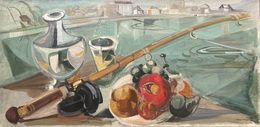
Fruits et vin en Touraine
Jacques Despierre
Painting - 40 x 80 x 3 cm Painting - 15.7 x 31.5 x 1.2 inch
£6,739
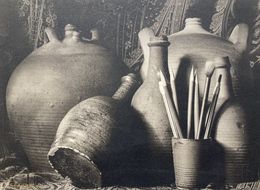
Nature-morte aux pinceaux
Pierre Brochet
Photography - 30 x 40 cm Photography - 11.8 x 15.7 inch
£404

Le plateau d’huîtres
Edmond Ceria
Painting - 27 x 41 x 3 cm Painting - 10.6 x 16.1 x 1.2 inch
£2,246
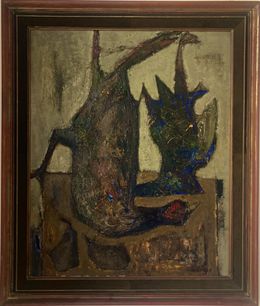
Nature morte au faisan
Raymond Guerrier
Painting - 100 x 78 x 3 cm Painting - 39.4 x 30.7 x 1.2 inch
£2,067
Exhibitions in Paris

Ito
Ito x Py’R
From December 17, 2023 to May 17, 2024
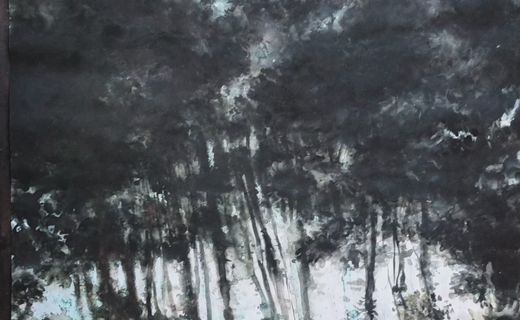
GALERIE GUILLAUME
L'arrière-monde
From November 28, 2023 to January 16, 2024

Pink Gallery
Porsche Legend
From December 8, 2023 to December 21, 2023

Galerie Envie d'Art
Winter Group Show
From November 21, 2023 to December 19, 2023

OA Fine Art
Untitled
From November 15, 2023 to December 9, 2023

GALERIE GUILLAUME
La joie et rien d'autre
From October 3, 2023 to November 14, 2023

Galerie Envie d'Art
Volumes: Joris Ghilini, Camille Levert, Jeff Robb
From September 11, 2023 to October 7, 2023

OA Fine Art
One Night in Paris
From October 15, 2023 to November 9, 2023

Samuel Lalier
The Living Factory
From March 26, 2023 to April 2, 2023
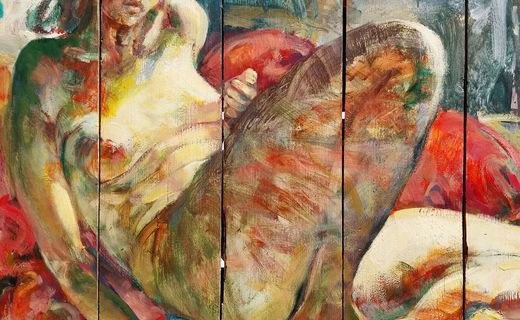
GALERIE GUILLAUME
Witold Pyzik, 89,6°Fahrenheit
From September 1, 2023 to September 25, 2023
